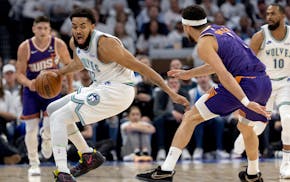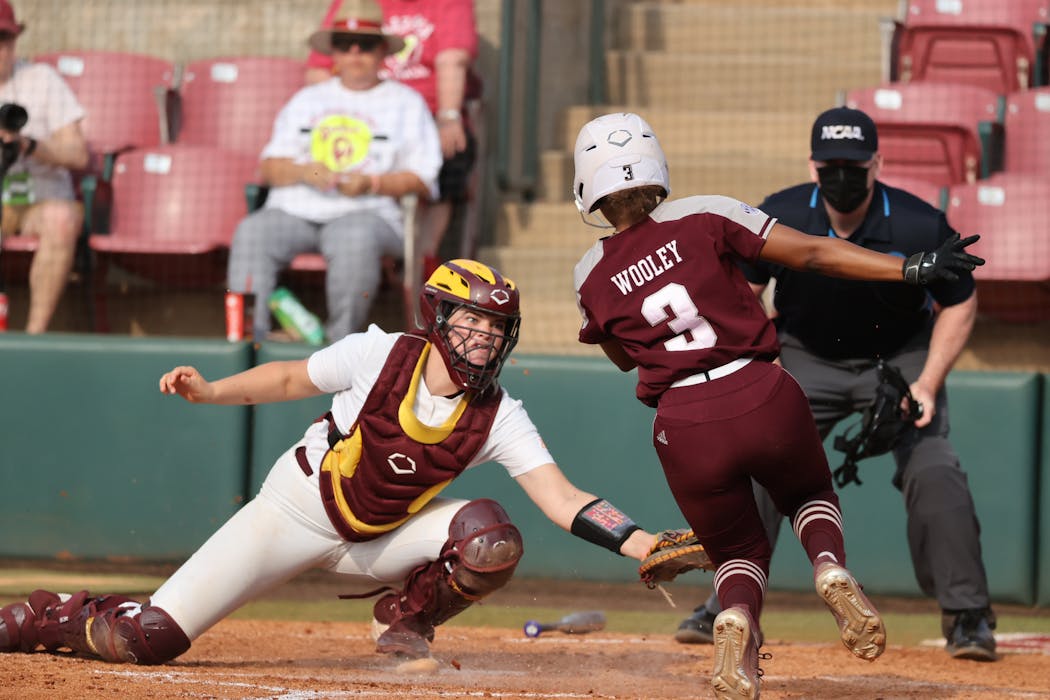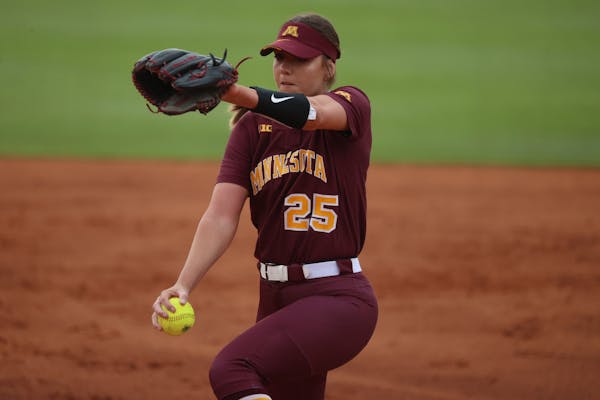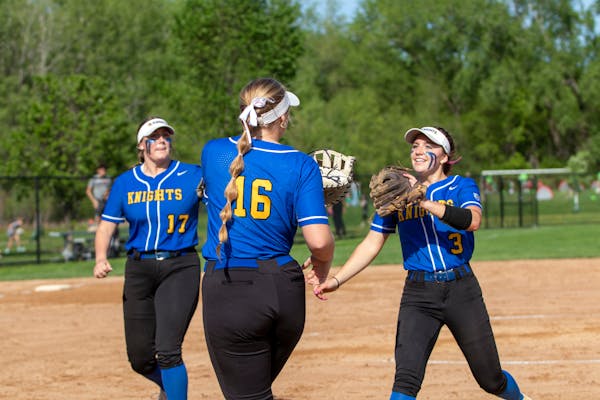Sara Moulton had just finished her freshman season of what became an All-Big Ten and All-America pitching career for the Gophers softball team.
On the TV at a postseason team gathering in 2011 was the Women's College World Series. She remembers settling in next to her father to watch. Questions began to form.
"I didn't know there was such a thing," said Moulton, now an owner and trainer at Strike Zone Sports, a softball training facility in Eagan, where she went to high school. "We just finished a rebuilding year, but I remember thinking, 'Why can't we play there?' It was so exciting. I wanted to be there."
A dozen years later, college softball is ubiquitous on springtime TV. On weekends in May and June, as many as 10 televised games can be found, on ESPN channels, the Big Ten Network, the SEC Network, the Pac-12 Network, even broadcast networks.
The reason? People watch. The 2021 Women's College World Series was the most watched on record, averaging 1.2 million viewers per game, more than that year's baseball College World Series.
Last year, the final game of the Women's College World Series was televised by ABC, the first time it was shown on broadcast television.
Softball has even challenged professional sports playoffs for ratings supremacy. In 2021, the first day of the Women's College World Series averaged 755,000 viewers. The first-round games in the NHL playoffs that year averaged 642,000 viewers.
That brings us back to Moulton as a college freshman, her eyes opened to possibilities when she saw her favorite sport on national television.
"If I was thinking that when I was in college," said Moulton, "I can imagine what a 10-year-old girl would be thinking when they watched. TV has been huge in helping grow the game."
Perhaps people enjoy watching softball for the same reason Rosemount shortstop Isabelle Nosan enjoys playing. She favors softball's "quick rhythm."
"Baseball has swag, softball more rhythm," said Nosan, who is headed to Iowa State for college softball. "When I play softball, I'm always just a little out of breath because I'm always moving."
Softball participation has risen alongside viewership. By various measures, high school and club participation have been on the rise for about 15 years.
"Numbers are exploding all over," said Forest Lake coach Sean Hall, who also runs Midwest Speed, one of the elite club programs in the state. "It's a fun, fast-paced game. And games are quick. Most only take about an hour and a half, maybe two, tops."
Growth in high school softball participation is easily measured until the pandemic years get involved. According to figures provided by the Minnesota State High School League, softball had 11,254 participants in the 2008-09 school year. By 2018-19, the number had jumped to 13,235, an increase of almost 18%. That's the last reliable year for MSHSL numbers, because COVID-19 wiped out the 2020 season and impacted seasons since.
An up-to-date measure comes from USA Softball Minnesota, an organization that serves youth softball community leagues and a few club teams. In 2022, USA Softball Minnesota listed 2,262 teams from ages 8 to 18, the highest number in the organization's history. USA Softball Minnesota's commissioner said the organization in recent years has consistently added 100 teams per year.
Softball participation numbers and viewership have surged at the same time the sport has seen changes in rules, equipment and availability.
Hall, who led the Rangers to the Class 4A title in 2022, said the decision to move the pitching rubber back 3 feet from home plate — from 40 feet to 43 feet — in 2011 was a watershed moment. Softball pitchers previously had a decided edge over hitters. No-hitters were common, perfect games not unusual.
Now?
"It's a more interesting game," Hall said. "We still have our share of dominant pitchers, but not nearly as many as there used to be. It's added offense to the game."
Dan Pfeffer, commissioner for USA Softball Minnesota, cited offense, too, assisted by equipment.
"It really started in 2008, 2009 with the introduction of composite bats," he said. "… Coaches don't have to coach to swing for power anymore. All a player has to do is square up on the ball and it goes."
Said Moulton: "It's crazy. A hitter can swing one-handed and hit it out of the park."
Concern about injuries from batted balls is eased by widespread acceptance of face masks for fielders, especially pitchers and third basemen.
All that has happened as softball became a year-round sport. Softball fields, with bases 60 feet apart and fences commonly only about 220 feet from the plate, fit nicely inside the typical inflatable dome.
"The game is the same," Hall said. "There are just more opportunities."
Opportunities to play and opportunities to watch.
Despite the warmer weather that had been so elusive this spring, Rosemount power-hitting first baseman Paige Zender is spending much weekend time indoors, watching college softball on television.
"It consumes me," said Zender, who has a state-leading 10 home runs this season and is also an Iowa State signee. "It's inspiring to see younger girls mimic some of the players and want to be like them."

Neal: 'Wolves in four'? Fans' chant could prove correct.
Pascal Siakam leads resurgent Pacers offense in 125-108 victory that evens series with Bucks





